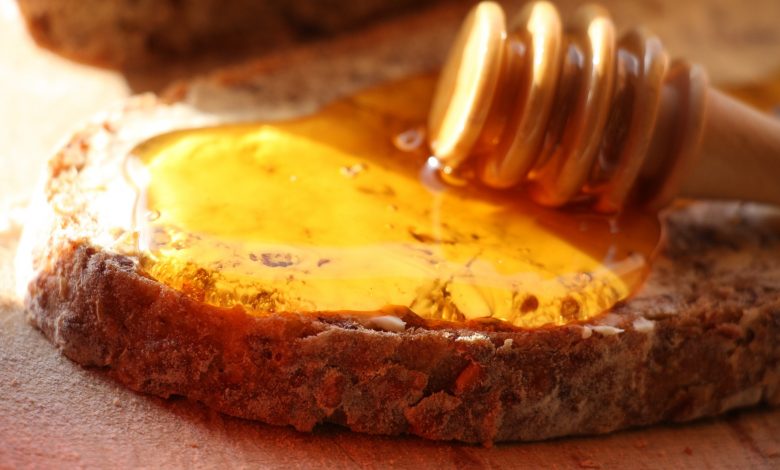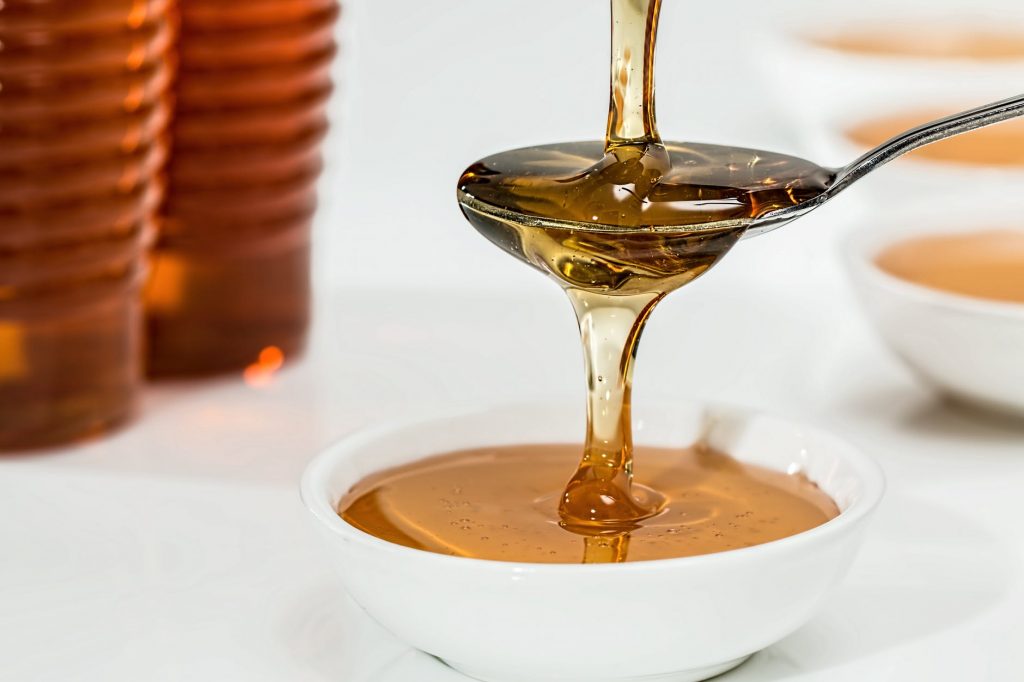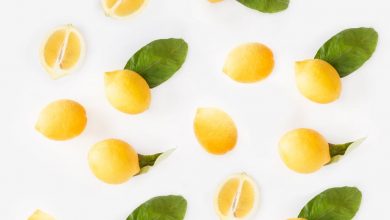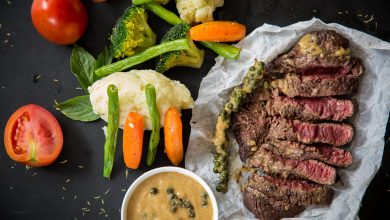
Why Raw Honey is the Best Honey
Honey, the golden brown sweetener made by nature’s own hands, is a staple in most kitchens. In fact, you will find a jar of honey sitting on the shelf of a fitness-conscious person for sure. Many people prefer to use honey to sweeten their breakfast bowl of oatmeal or to dribble on their whole-wheat toast slices instead of using other sweeteners, particularly sugar or sugar-based syrups. While this is a good thing, it is equally true that most of us don’t quite know if honey is a healthy option when it comes to calorie counts.
If you are trying to cut down your calorie intake, are you doing the right thing by using honey at all? Is there an alternative to honey that comes with lower calories? What about low-calorie honey that you may find in your supermarket?
If you have been thinking about getting one of those attractive bottles marked “low-calorie honey,” think again. It may not be pure honey that you are getting but a combination of honey with something else, like stevia, perhaps, that keeps the sweetness intact. Stevia is a popular sweetener that comes with an impressive low-calorie nutrition profile. On the calorie front, this may seem like it is the ideal thing.
But remember, honey is not preferred just for its sweetness; there are a myriad of nutrients in this natural foodstuff that make it an excellent addition to our diets. Honey contains a whole host of vitamins, antioxidants, digestive enzymes, amino acids, and much more that can benefit your overall health. A combo product where honey is mixed with a low-calorie sweetener dilutes these benefits dramatically. If you are looking for honey with no such combinations, then you need to make peace with the fact that it has calories.
Does Low-Calorie Honey Exist?
Honey made from different sources does differ in terms of nutritional profile marginally. However, in general, you cannot find natural honey that is low in calories or that has no calories. If you take a tablespoon of honey, that is about 21 grams, know that you have taken in about 64 calories. That’s apart from all the other nutrients that honey has to offer.
Now, you also need to know that, when you are buying your honey, the total calorie count that it represents also stems from its sugar content. This is where you may be able to make a well-informed choice if you are aware that raw honey, or the kind that is closest to what you find in nature in its purest form, is the best bet you have if you are looking for low-calorie honey. That is because when the honey is processed, there is a good chance that some kind of sweetener is added to it before it is sealed and readied for you. This means raw honey comes with less sugar and fewer calories than many processed forms.

Raw Honey vs. Regular Honey
When you browse through the shelves at your local supermarket, there is a good chance that you will find a whole section for sweeteners, and within this segment, you will find quite a collection of various honey varieties. You might find both raw honey and regular honey here side by side. What’s the difference between the two?
Raw honey is what you get almost straight from nature – the honey is extracted from the honeycomb, and it undergoes the filtration process through nylon or mesh so that the debris is removed. When honey is removed from the honeycomb, it has pieces of the honeycomb itself, dead bees, and other impurities. The filtration gets rid of these and leaves the honey intact, as it is when produced in nature. The next step is where the raw honey is bottled and sealed for you. That’s it! No more processing.
Regular honey undergoes further filtration and also, typically, pasteurization, which involves heating the honey to remove potential toxins. Sugar may be added to it at this time, but even if no additional sweetening is added to it at the end of this process, the heating still strips honey of many of its nutrients. According to this study, if sugar is added, it may still be undetectable, but it does affect the quality of honey adversely. Once the pasteurization is done, the honey is sealed and bottled and sold as regular honey. There is some evidence to suggest that pasteurization destroys the antioxidants and some other nutrients in honey, leaving you with a much less nutritious product than the bees created originally. Studies reiterate the anti-cancer properties of antioxidants, so the preferred choice is to go for raw honey that is loaded with these.
Impact of Adding Sugar to Honey
Why does the addition of sugar to honey make a difference? We do need sugar for the efficient functioning of the body, after all. Yes, we do, and that is why, unless there is a medical recommendation for a specific reason to reduce your sugar intake, you mustn’t cut sugar out of your diet entirely. It is when you are consuming too much sugar that you impair your health. One of the problems is that too much sugar overloads the calories you ingest. Our body needs calories too, but again, only as much as it can burn and utilize. Any more, and it shows up as weight gain.
If we are already consuming too many calories, then adding extra sugar is going to cause a whole lot of trouble. If you ask your physician for tips on cutting down weight, the chances are that they will tell you to eat nutritious, protein-rich foods, cut down the carbs, and also reduce the sugar you consume in a day, apart from asking you to adopt an active lifestyle. Talk to people who have succeeded in losing weight dramatically, and in all probability, they will tell you that they cut out carbonated drinks, soda, and energy drinks as a first step towards weight loss and even switched to sugar-less tea and coffee.
Restricting sugar intake works because it limits the empty calories you ingest. These empty calories give you a sudden boost of energy, but this lasts only for a brief time, and then it fades away again. Since the calorie-rich refined sugar has no nutrients to offer, you get no benefit from this for your overall health. This is exactly why these are called empty calories – they have no nutritional value to offer.
While you do need calories, you should be getting them from foods that also give you other kinds of nutrients. This is where the nutritional value of low-calorie raw honey shines through. In regular honey, you have added sugars that are nothing but empty calories. In raw honey, you do not have these empty calories, as the honey is packed with several nutrients.
Also, with honey being sweeter than refined sugar, you need to add less of it to get the same degree of sweetening. That’s another way in which you cut down the total calories consumed and add nutrients to your system when you opt for raw honey.

Low-Fructose Raw Honey
Compare sugar and raw honey, and you can see that sugar has about 50 percent fructose and 50 percent glucose, whereas honey has about 40 percent fructose and 30 percent glucose (the rest being water, pollen, and a myriad of minerals). The difference in fructose levels is significant despite the fact that the calories you get from glucose and fructose are identical.
The interesting fact is that unlike glucose that can be broken down by the body’s tissues anywhere, fructose needs your liver to be working overtime to metabolize it. That’s not the only thing; fructose does not make you feel as satiated as glucose does, which means that, after a sugar-rich meal, you may soon feel a craving for food. Add to this the fact that a higher level of fructose results in a higher level of ghrelin, the hunger hormone, and you can see how this contributes to more cravings and potentially pushes you to eat more than you need, as well. Fructose also promotes insulin resistance if you ingest too much of it. In short, avoiding a product with too much sugar or added sugar is in your best interests for sure.
The clincher is that raw honey has less fructose than sugar, so you add fewer calories to your system as well when you opt for the former. But if you opt for a honey variant that contains added sugar (with or without your knowledge), you negate this benefit. Since there is no way to tell by taste if sugar has been added to a bottle of regular honey, the best thing for you to do is to go for raw honey because you are sure that it has no extra fructose. What you should know, in particular, is that often honey is sweetened with corn syrup, which is extremely high in fructose.
How to Ensure Your Honey is Not Processed or Pasteurized
Pasteurization methods involve heating the honey, and this heating causes a number of its inherent nutrients to be lost forever. Pasteurized honey may appear much more appealing – a clear liquid with a rich, even golden hue, but appearances may well be deceptive in this case since pasteurization can strip it of its goodness. In contrast, raw honey may be creamier, thicker, and it need not be a clear liquid at all. If the honey is cloudy or you can see that it is crystallized, it does not mean it is spoilt at all. Raw honey does crystallize, and all you need to do to melt it is to put it in a pan with heated water. Of course, you must take care not to heat it too much since heating destroys the nutrients. If you have a bee farm nearby, you may be able to get your raw honey straight from the bee-hive.
When you are shopping for your honey, check the label to see if it clearly mentions that it is raw honey. In the U.S., honey that undergoes pasteurization or processing cannot be labeled raw. The same goes for products marked ‘”pure” honey. The word “pure” does not indicate that this is raw honey at all. In fact, it is a smart move for you to carefully check the label on your bottle of honey and peruse the list of ingredients meticulously. You may find some unexpected additives mentioned there.
If you are in the habit of using organic product and you think that organic honey is the same as raw honey, you are in for an unpleasant surprise. All that the organic label means is that the honey you are using comes from a farm (bee farm) that fulfills the requirements laid out by the USDA concerning organic livestock standards. Organic honey can be processed, may have added sugars, and may be pasteurized, thus losing many of its nutrients.

With a healthier glycemic index that indicates that the sugar content in honey is absorbed more efficiently and easily by our body, a whole range of useful nutrients, awesome taste, and illness-preventing properties, there is all the reason in the world to go and buy your bottle of honey right away. However, to keep the calories you will ingest from this foodstuff within reasonable levels, you need to opt for a form of it that is closest to how nature designed it, and this is why you need to get raw honey. While products that claim to be zero-calorie honey or low-calorie honey may have some honey content in them, do not assume that they will give you all the myriad of benefits that natural, raw honey has to offer. It is in your best interests to carefully check for the raw honey label when you are shopping for a bottle of honey.



